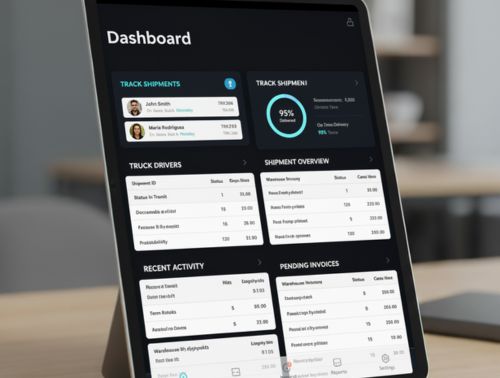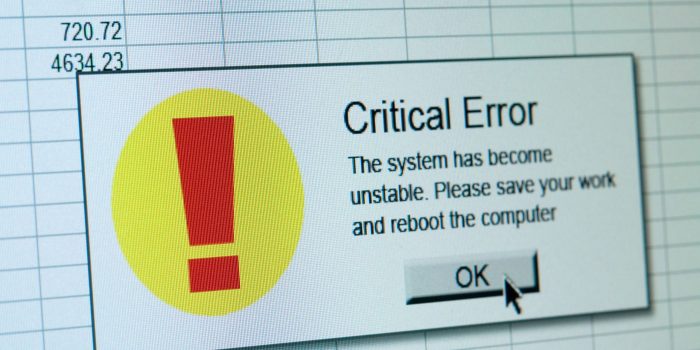In the high-stakes world of logistics, thin margins and rising costs are a constant battle. Companies are increasingly asking how to reduce logistics costs effectively. The answer lies in logistics optimization software. This technology—spanning Transportation Management Systems (TMS), Warehouse Management Systems (WMS), and advanced route planners—is no longer a luxury. It is a critical tool for survival that delivers a tangible logistics ROI.
But “efficiency” is a vague promise. What is the actual, quantifiable impact of optimization on the supply chain? When a company invests, are we talking a 2% saving, or a 20% saving in freight spend and labor costs?
The answer, supported by extensive industry analysis and academic research, is that the savings are substantial, often falling into double digits across key cost centers. This article explores the specific percentage savings logistics companies are achieving by digitizing and optimizing their operations.
How TMS and Route Optimization Software Cut Transportation Costs
Transportation is the largest cost center for most supply chains, often accounting for 50-70% of total logistics spending. It is also the area most vulnerable to external volatility. This is where logistics optimization software provides its most immediate and dramatic returns.
Up to 30% in Fuel Savings with Route Optimization
The most direct saving comes from burning less fuel. Advanced route optimization software does far more than a standard GPS. It solves the “Vehicle Routing Problem” (VRP), a notoriously complex computational challenge, by factoring in:
- Real-time traffic data
- Vehicle capacity and type
- Delivery time windows
- Driver hours-of-service (HOS) rules
- Turn avoidance and other strategic parameters
The route optimization fuel savings are striking. Research widely reports that effective implementation can slash fuel costs and total mileage by a significant margin. An analysis highlighted by AxiomQ, a fleet technology resource, found that route optimization can reduce fuel costs by as much as 20%.
More aggressive systems that also monitor driver behavior (like harsh braking and idle time) can push this even higher. Technology provider Planlogi cites case studies where integrated fuel management and routing systems achieved fuel savings of up to 30%.
For a medium-sized fleet, this percentage saving translates into millions of dollars in annual profit.
5-15% Reduction in Freight Spend with a TMS
A Transportation Management System (TMS) provides a centralized platform to manage the entire transport operation. This “control tower” view allows for strategic, data-driven decisions rather than reactive ones. This is how much money a TMS can save a company in overall spend.

According to analysis from the Generix Group, citing studies from Supply Chain Digest and ARC Advisory Group, the impact is clear:
- Companies implementing a TMS typically see 5-10% cost savings within the first year.
- A Supply Chain Digest study found that 45% of TMS users reported annual freight savings between 5% and 15%.
- The ARC Advisory Group reported that 23% of respondents in their survey saw freight savings exceeding 10%.
These TMS savings are not from fuel alone. They are realized through:
- Load Consolidation: The system automatically identifies opportunities to combine less-than-truckload (LTL) shipments into one full truckload (FTL), drastically cutting costs per-unit.
- Carrier Selection: The TMS automates procurement and carrier selection, ensuring the company always uses the most cost-effective, compliant carrier for that specific lane.
- Freight Audit & Automation: It automates freight auditing, catching and eliminating billing errors from carriers that would have previously been paid without question, recovering significant lost revenue.
Boosting Warehouse Productivity with WMS Software
While TMS software tackles costs on the road, a Warehouse Management System (WMS) attacks inefficiency inside the four walls. The main drains on warehouse profitability are labor, space, and inventory holding costs. A WMS delivers significant WMS productivity gains across all three.
Achieving 20-35% Gains in Labor Productivity
Labor is the single biggest expense in most warehouses. A WMS transforms labor productivity by replacing paper-based guesswork with digitally directed activity. Instead of a picker grabbing a list and wandering the aisles, the system directs them via a handheld scanner or voice-com unit on the most efficient path.
This is known as “directed picking,” and it eliminates wasted movement. A WMS optimizes a picker’s route through the warehouse—using “snake routing” or “batch picking”—to fulfill multiple orders at once.
The results are transformative. A 2022 case study published in the Institutional Repository of the University of Lima (Repositorio Institucional ULima) analyzed the implementation of Lean warehousing principles, which are the methodologies digitized by a WMS. The results showed a:
- 33% increase in storage process productivity.
- 27% increase in picking and dispatch productivity.
This aligns with broad industry consensus that a properly implemented WMS can boost labor productivity by 20-35%. This means the same number of staff can process significantly more orders, or the company can handle its current volume with a much lower labor bill.
Optimizing Warehouse Space and Inventory Accuracy
A WMS optimizes the physical layout of the warehouse, a practice known as “slotting optimization.” It uses data to place high-velocity items in the most accessible locations (the “golden zone”), minimizing travel time. It also allows for dynamic, high-density storage, eliminating the “honeycombing” effect where half-empty bins waste valuable space. This optimization can often improve warehouse space utilization by 10-20%, allowing companies to delay or cancel a costly expansion.
Furthermore, by maintaining a 99.9%+ inventory accuracy rate (compared to ~95% for a manual system), a WMS reduces the need for “just-in-case” safety stock. This directly lowers inventory holding costs, which are often cited as being 20-30% of the inventory’s value per year.
As Gwynne Richards, a leading authority on warehousing, notes in his foundational book, “Warehouse Management: A Complete Guide to Improving Efficiency and Minimizing Costs,” the primary goal is to create “an efficient and cost-effective warehouse.”
A WMS is the primary technological tool for achieving this.
The Strategic Impact of Optimization on Supply Chain Performance
The power of process optimization in logistics is not just theoretical; it’s a core principle of modern business strategy.
In their seminal textbook, “Supply Chain Management: Strategy, Planning, and Operation,” Sunil Chopra and Peter Meindl frame the entire supply chain around key “drivers”: Facilities, Inventory, and Transportation.
They argue that a company’s success depends on using “managerial levers” to find the right balance between responsiveness and efficiency for these drivers. Optimization software is the modern managerial lever.
- A WMS is the lever for Facilities.
- A TMS is the lever for Transportation.
- Inventory optimization modules are the lever for Inventory.
Without this software, managers are flying blind, making decisions based on intuition or outdated spreadsheets. With it, they can precisely model the cost-saving impact of every decision.
Conclusion: Your Compounding ROI from Logistics Software
The savings from logistics optimization software are not isolated. They are cumulative. The true logistics ROI comes from this compounding effect.
A 15% reduction in fuel (from route optimization) combined with an 8% reduction in freight spend (from a TMS) and a 25% increase in labor productivity (from a WMS) does not just make a company more profitable. It makes it more resilient, more competitive, and more capable of meeting the escalating demands of the modern consumer.
The evidence is clear: logistics optimization software is not an IT expense. It is a direct investment in the bottom line, with quantifiable, double-digit percentage returns that often pay for the system itself within 12 to 18 months. In the race to reduce logistics costs and improve service, data-driven optimization is the only way to win.
Article and Book Citations
[1] AxiomQ. (2022). How can route optimisation save you 20% on fuel usage?
[2] Planlogi. (n.d.). How Route Optimization Can Reduce Fuel Costs by Up to 30%.
https://planlogi.com/fuel-management
[3] Generix Group. (2018). How can you cut costs with a TMS?
https://www.generixgroup.com/en/blog/how-can-you-cut-costs-tms
[4] Repositorio Institucional ULima (University of Lima). (2022). Warehouse management model based on lean manufacturing to reduce the incidence of ceramic tiles breakage in the retail sector.
https://repositorio.ulima.edu.pe/bitstream/20.500.12724/19292/12/T018_72446039_T.pdf
[5] Richards, G. (2011). Warehouse Management: A Complete Guide to Improving Efficiency and Minimizing Costs in the Modern Warehouse. Kogan Page.
https://www.goodreads.com/book/show/23565614
[6] Chopra, S., & Meindl, P. (2019). Supply Chain Management: Strategy, Planning, and Operation (7th Edition). Pearson.



